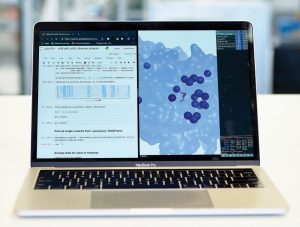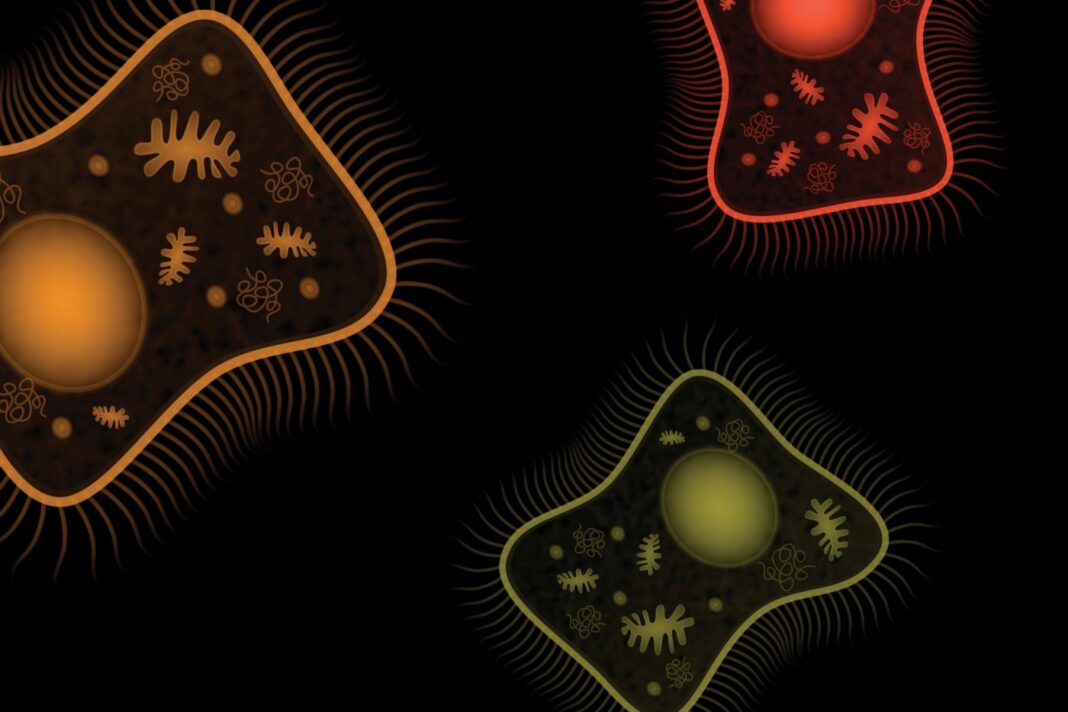Many of the products we use every day—plastics, cosmetics, clothing, fertilizers, and even aspirin—include molecular ingredients derived from petrochemicals. But, says Zach Serber, PhD, CSO and co-founder of Zymergen, the potential to create new materials from petrochemicals has largely played out.
“Innovation in the world at large is in many ways stifled by a lack of molecular diversity,” Serber tells GEN. An important source for the molecular diversity needed to produce the materials and innovations of the future in Zymergen’s estimation can be found in synthetic biology approaches to designing custom-engineered microbes.
The U.K. Royal Society defines synthetic biology as “the design and construction of novel artificial biological pathways, organisms, and devices or the redesign of existing natural biological systems.”1 What distinguishes Zymergen’s approach to synthetic biology and microbe engineering isn’t so much about fundamental biology as it is the company’s use of automation together with machine learning to explore what it refers to as “genomic search space.”
“What we’re trying to do is build a platform to unlock that potential to make molecules available to solve unmet needs—to bring new molecules to bear on old problems,” Serber says.
At Zymergen, they’ve created an extensive digital catalog of all the biomolecules that, theoretically at least, their microbes should be capable of producing, Serber explains. It’s based on an in silico analysis in which they’ve taken all known enzymes and arranged them in arbitrary ways to create virtual synthetic biological pathways. For the most part, the molecular products of those pathways exist in nature, but, Serber notes, “it doesn’t matter if they do or not.”
Serber also points to an important role for close and iterative communication between the biologists making the molecules at Zymergen and the chemists at Zymergen’s customers, companies that are looking to solve chemical problems in new ways with new ingredients. Zymergen’s co-founders are generally tight-lipped about who their customers are and which raw materials they are working to develop. However, in April, they offered a first glimpse with the announcement of a partnership with Sumitomo Chemical, a supplier of major electronic companies.2
According to their announcement, Zymergen has partnered with Sumitomo to develop a variety of specialty materials for use in consumer electronics, including optical films for displays, hard coatings that won’t scratch, and flexible electronics circuits.
“We’re a young company, and this is a young sector trying to demonstrate relevance,” Serber says. While Zymergen is working on longer-term applications, consumer electronics is an appealing early one to tackle, he adds, because of its relatively rapid development times and accessibility to general consumers.
An organism company
Ginkgo Bioworks has been similarly focused on the design of custom microbes for their customers in a variety of markets. The foundation of its business model is what it calls foundries—essentially genetically modified organism factories—that have enabled the company to design and test engineered microbes in rapid fashion.

Jeff Lou, head of automation at Ginkgo, explains that an extensive, $35-million collection of liquid handling robots allows the testing of many versions of custom organisms at once. Sophisticated computer algorithms map out how those robots will operate efficiently to simultaneously run several different protocols hundreds if not thousands of times in a single day.
“We’re focused on turning biology into an engineering science,” Lou says, noting that Gingko has applied lessons learned in Silicon Valley to devise reliable computing environments for engineering single-celled organisms more rapidly and cheaply.
Gingko’s earliest customers were concentrated in the flavor and fragrance industries. As one notable example, the company made headlines earlier this year for bringing the scent of an extinct mountain hibiscus flower3 back to life. That news was soon followed by the announcement that the Ginkgo spinoff Motif Ingredients4 is pursuing engineered microbes as a source for producing alternative and more sustainable animal-inspired protein ingredients.
The company is also working to address agricultural challenges by engineering soil microbes capable of fixing nitrogen and providing the essential nutrient to crops such as wheat and corn as an alternative to traditional nitrogen fertilizers. “It’s an inspiring project,” Lou declares. “We get to work on some of the hardest problems in world.”
Last year, Ginkgo expanded beyond microbes with the opening of its fourth foundry, focused on engineering mammalian cells,5 signaling the company’s expansion into therapeutics. It also recently announced the acquisition of the genome mining platform of Warp Drive Bio, a subsidiary of Revolution Medicines, and a plan to search for novel antibiotics6 that may be hidden within the genomes of thousands of bacterial strains.
A greener, bio-based future
For synthetic biology company iMicrobes, the focus is not necessarily to find new materials, products, or medicines, but rather better ways to make existing ones.

A key element in iMicrobes’ approach is its use of microbes engineered to feed on methane waste, a major greenhouse gas, in place of the usual plant sugars. Such microbes are promising because they are able to consume waste materials and convert them into useful products that could be both “green” and inexpensive.
The company has borrowed the essential pathways for living on methane from existing and more exotic microbial species and inserted them into yeast and Escherichia coli, which are more easily kept in the lab. Greenfield reports that the company can use engineered microbes to produce six different chemicals from methane gas, a couple of which have been shared publicly. Those include monomers for biodegradable plastics and a surfactant used in laundry detergents.
After about five years of engineering effort, iMicrobe has its microbe-driven system up and running in small-scale batches, about the size of a water bottle, and it has secured funding to help it scale those processes up. The first products including ingredients made from its methane-eating microbes are likely still at least a year or two away if not more, Greenfield says.
Synthesizing better medicine
Meanwhile, other companies are taking entirely different approaches to applying synthetic biology to making medical advances. One notable example is Synthorx. The company was inspired by the demonstration by Floyd E. Romesberg, PhD, at The Scripps Research Institute that it’s possible to expand the DNA code by two additional nucleotides, dubbed X and Y, and to engineer E. coli to read the new code and produce novel proteins.8
“It’s not possible really to create new chemistry with the 20 amino acids that Mother Nature made available,” says Marcos Milla, PhD, the company’s CSO. “One is constrained by the chemistry. So, what Synthorx brings into the picture is the possibility of introducing new amino acids into proteins in very precise fashion.”
The company is relying on this engineered system to produce optimized biologics it calls Synthorins. Its lead product candidate is a synthetic version of interleukin-2 (IL-2) called THOR-707. IL-2 is a cytokine used in cancer immunotherapy, but in most patients it causes serious or even life-threatening side effects. Treatment also requires repeated dosing due to the molecule’s short half-life. As recently reported at the American Society of Clinical Oncology (ASCO) Annual meeting, the company’s preclinical studies suggest that the synthetically derived THOR-707 might kill cancers cells with fewer side effects and fewer doses thanks to a pegylated site intended to block engagement of the alpha chain of the IL-2 receptor.9
Synthorx recently launched a Phase I/II clinical trial of THOR-707 in multiple tumor types as both a single agent and in combination with immune checkpoint inhibitors.
“This is a very exciting place for the company and, we believe, for patients as well,” says Laura Shawver, PhD, Synthorx’s president and CEO. “IL-2 is something that is a valid target. We know that it works in cancer patients, and so the ability to develop an IL-2 that can be administered without life-threatening toxicity will really help patients. We believe its properties are such that it will be able to be combined with other anticancer modalities. I think this is the tip of the iceberg for what this synthetic biology platform will achieve.”
References
- royalsociety.org/topics-policy/projects/synthetic-biology/
- www.businesswire.com/news/home/20190417005143/en/Sumitomo-Chemical-Zymergen-Announce-Partnership-Develop-Renewable
- mauinow.com/2019/02/19/scent-of-extinct-maui-mountain-hibiscus-revived-by-science/
- www.ginkgobioworks.com/2019/02/26/introducing-motif/
- www.prnewswire.com/news-releases/ginkgo-bioworks-opens-bioworks4-adds-new-tools-for-the-rapid-genetic-engineering-of-mammalian-cells-300736726.html
- finance.yahoo.com/news/ginkgo-bioworks-acquires-warp-drive-100000811.html
- boltthreads.com/technology/microsilk/
- Zhang Y, et al. A semi-synthetic organism that stores and retrieves increased genetic information. Nature 2017 Nov 29; 551(7682): 644–647. doi: 10.1038/nature24659.
- finance.yahoo.com/news/synthorx-present-2019-american-society-211500304.html


